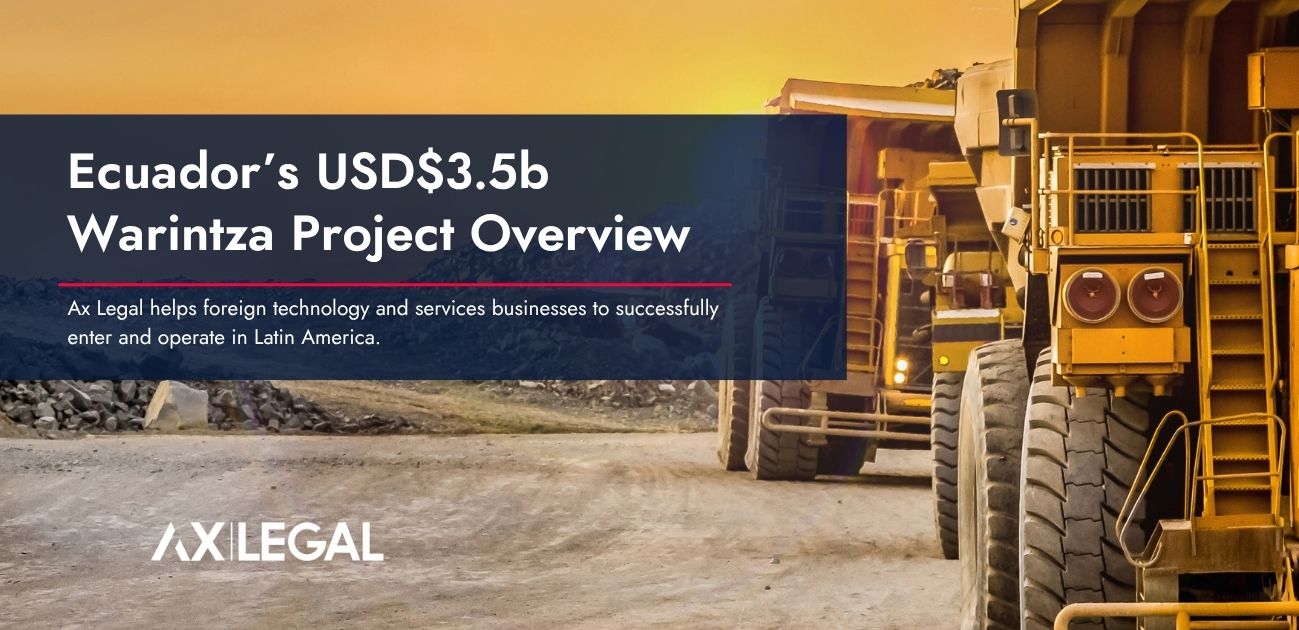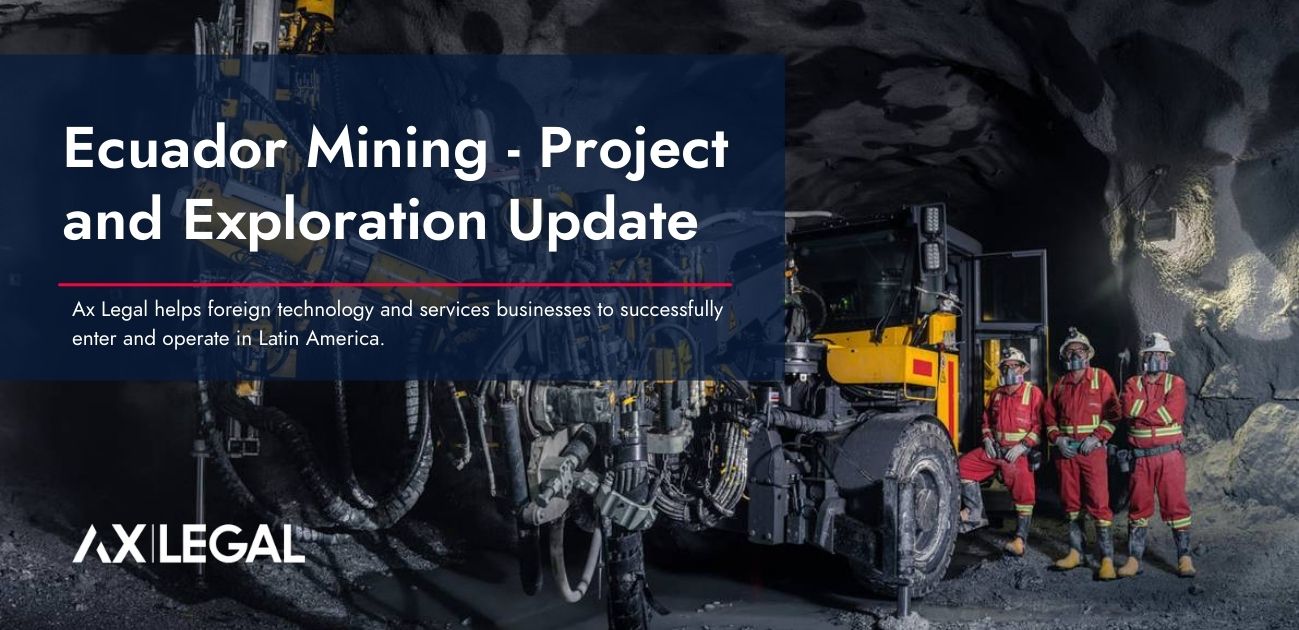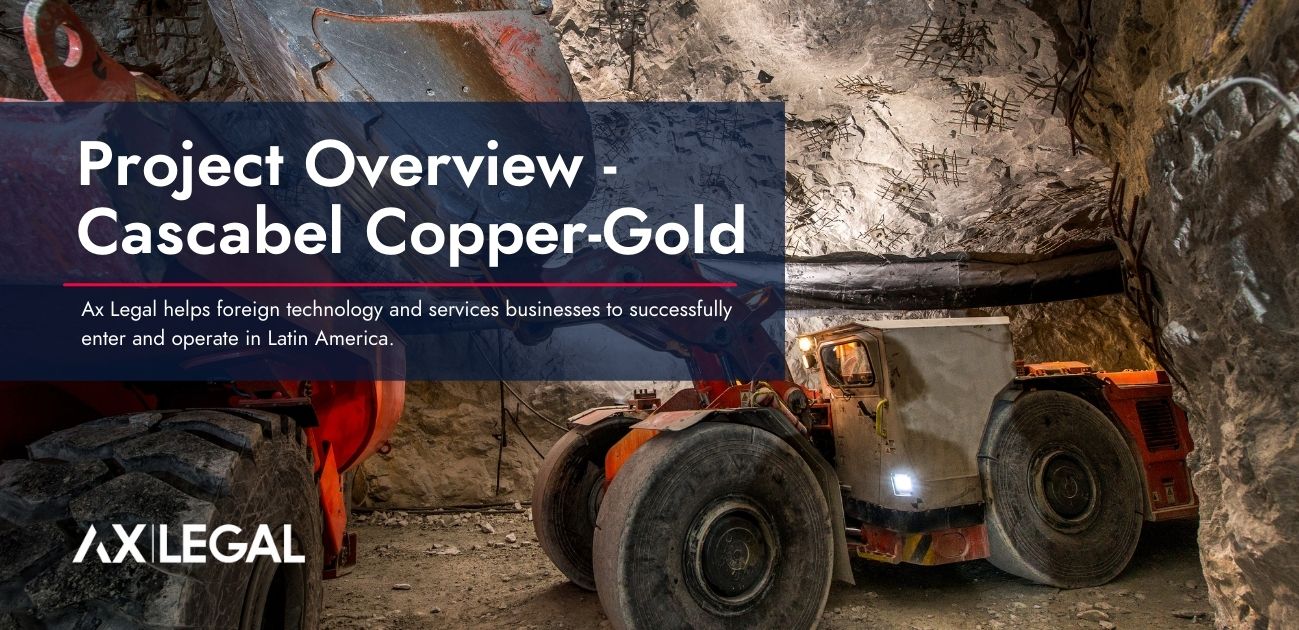Ecuador’s Project Pipeline: USD$3.5b Warintza Project Overview
Ecuador is at a turning point. In a little over five years, it has moved from a frontier jurisdiction to a credible mining destination, driven by the successful development of Fruta del Norte and Mirador. These first industrial-scale operations proved that large projects in Ecuador are not only possible but investable. Just as importantly, they demonstrated how responsible mining can deliver meaningful economic benefits to a dollarized economy that needs new engines of growth.
Over the past decade, Ecuador has quietly positioned itself as one of the region’s most interesting emerging mining jurisdictions. A combination of geological potential, regulatory improvements, and a maturing investment environment is attracting the attention of major copper developers.
The release of the pre-feasibility study (PFS) for Solaris Resources’ Warintza project reinforces this shift. It is one of the strongest early-stage copper projects globally, and it gives a clear indication of where Ecuador is heading as a mining country.
Introducing the Warintza Project
Located in the Morona Santiago province, Warintza is a large-scale copper–molybdenum porphyry operated by Canadian miner Solaris Resources. The newly released pre-feasibility study reinforces the project’s significance, confirming it as one of the most attractive undeveloped copper assets globally. The study outlines a CAPEX of US$3.7 billion, an initial mine life of 22 years, and long-term potential of up to 55 years with continued drilling. The project has already world-class metrics for an open-pit copper project.
- Proven + Probable reserves: 1.3 billion tonnes
- Measured + Indicated resources: 3.7 billion tonnes
- Inferred resources: 2.1 billion tonnes
- Production profile:
- 300,000 t CuEq per year in the first 5 years
- 240,000 t CuEq per year over the first 15 years
- Strip ratio: 0.53:1 (very favourable)
- Operating costs: First-quartile globally
- Payback: 2.6 years post-tax
Warintza Project Overview
- The Warintza process plant will treat a blend of supergene and hypogene copper ores, with hypogene chalcopyrite being the dominant material. The plant design follows a conventional porphyry copper–molybdenum flowsheet, with a planned throughput of 165,000 tonnes per day. Ore will undergo primary and secondary crushing, followed by SAG and ball milling to achieve a P80 of 150 μm. The high ore competency supports the use of secondary crushing to improve mill throughput. Two grinding lines will be installed, each with a 24 MW SAG mill and two 22 MW ball mills.
- A rougher flotation circuit will produce a bulk Cu-Mo concentrate that is reground to a P80 of 25 μm and cleaned in three stages. The copper and molybdenum concentrates are then separated, dewatered, and shipped to off-site smelters. Tailings will be thickened and pumped either to the tailings management facility (TMF) or to cyclone stations, where coarse sands will be used for embankment construction and fine material deposited into the TMF.
- The plant site sits on steep terrain, requiring significant earthworks. Ongoing footprint optimization and terracing may help reduce these costs.
- From an infrastructure perspective, the project includes new access roads connecting the mine to the Gualaceo–Plan de Milagro highway and a concentrate transport route to the Port of Bolivar. Heavy equipment and materials will be shipped through the ports of Bolivar and Posorja.
- Power demand is estimated at 236 MW, delivered via a 62-km, 230-kV transmission line from the Bomboiza substation. Raw water will be collected from a rainwater intake and delivered by gravity to the plant, with clean and contact water managed through diversion channels, attenuation dams, and recycling from the TMF.
- The TMF is designed to store 1.3 billion tonnes of tailings over the 22-year mine life. It will be located within the natural Warintza river basin and contained by four dams built using centreline construction and staged raises. Tailings will be cycloned to produce coarse sands for dam construction and fine material for deposition, with geochemical modelling indicating a stable, neutral pH.
- A Waste Rock Facility capable of storing approximately 670 million tonnes will be located upstream of the TMF and built using downstream-to-upstream placement to ensure geotechnical stability. Communications infrastructure for the project will include fibre optic connectivity, redundant switches, industrial Wi-Fi, extensive CCTV coverage, biometric access control, and a centralized monitoring centre. Accommodation will consist of a main permanent operations camp and smaller temporary camps to support construction activities.
Timeline: When Will Construction Begin?
Solaris has been operating in Ecuador for more than twenty years, during which it has completed over 200,000 metres of drilling and invested more than US$250 million in advancing the Warintza project. The company is now moving toward the next major phase, with construction targeted to begin in 2027 and first production expected in 2030. In the meantime, Solaris will continue progressing the key elements needed to move the project forward, including the environmental impact assessment, community and Indigenous engagement, detailed engineering, and the remaining permitting work.
Conclusion
Solaris Resources’ Warintza project now represents the next step in that evolution. The new pre-feasibility study confirms that Warintza is both technically and economically robust, one of the few world-class copper projects advancing globally, and uniquely timed to enter production during a tightening copper market. Its scale, longevity, and straightforward processing flowsheet position it as a cornerstone asset in Ecuador’s emerging mining landscape.
For mining technology and equipment providers, this creates a compelling window of opportunity. Ecuador’s project pipeline is strengthening, its geology is world-class, and the market is still early enough for companies to establish meaningful partnerships before competition intensifies. The jurisdiction will complement established hubs like Chile and Peru by offering a new source of demand for advanced mining systems, automation, power and water infrastructure, environmental technologies, and high-performance equipment.
At the same time, the path forward comes with real challenges. Regulatory frameworks are still maturing, community and indigenous engagement requires careful long-term commitment, and logistics in remote areas remain complex. Providers entering the market will need to be patient, informed, and proactive as they wait for projects to advance to construction.
Even with these hurdles, the direction is clear: Ecuador is shifting into a phase of sustained mining growth. Those who position themselves early, understanding both the opportunity and the responsibility, will be well placed to support and benefit from one of Latin America’s most promising new mining jurisdictions.
Ax Legal helps industrial technology, engineering, and service companies to navigate the legal and commercial aspects of operating their business in Latin America. With deep knowledge of the industrial and natural resource sectors, we provide actionable and practical advice to help streamline our clients’ entries into Latin America, improve how they operate in the region, and to protect their interests.
Over the years, our team of legal and commercial advisors have developed a track record of working with companies of all sizes from Australia, Canada, the U.S., and Europe. The one common factor that connects our clients is that they are leaders in their field, providing innovative technologies and services to the industrial sectors.
To better understand how we can support you in the Region, please contact Cody Mcfarlane at cmm@ax.legal




 Santiago
Santiago Sydney
Sydney Lima
Lima